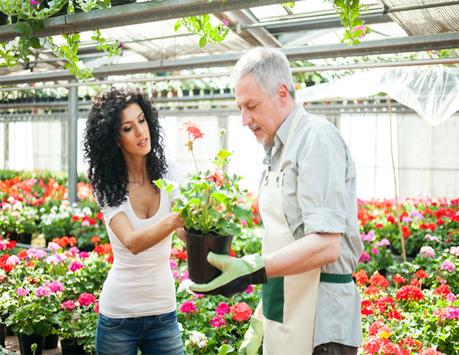So you’re a new plant enthusiast who wants to start a garden by buying a few from the nearby plant nursery. Or maybe you’ve always been in love with plants that you’re now growing as a forest in your home. Whatever the case may be, careful choosing plants from a center is not as easy as it sounds.
Healthy plants aren’t only for aesthetics, but have a range of advantages as well. Vigorous ones tend to establish themselves quicker, requiring only just a little maintenance. This is good news for owners as it means that the plants will bud, bloom, and bear fruit faster.
While all the plants in a nursery usually look lush and healthy, not all of them really are. You have to carefully check the chosen ones to make sure that they’re not a lemon. Getting an unhealthy plant, bringing it home, and adding it to your garden may pose a risk to other plants and your heart as well. So, before you commit a grave flowery mistake, take time to consider these essential tips to discover nursery plants that are healthy and those that are not.
Inspect The Quality Of The Plant Nursery Or Center
The overall quality of the plant nursery or center is a great indicator of how well-maintained the plants are. Scan the area; note any broken or fallen pots. Inspect sections that have plants with wilted leaves. If such is present, chances are the plant is not greatly cared for. Another thing to look out for is the quality of the soil used. All these give off a general impression that great care is not provided to the plants.
Examine The Roots
Roots are where everything starts; it is through them that a plant gets the necessary nutrients needed to grow and produce flowers and fruits. In some plants, you can check the roots by simply lifting the plant from its pot. Check the root color and its strength. Avoid getting plants that are soft and break or split at a touch. If the roots extend outside the pot, it can be a sign of stress. Also, be a responsible shopper and be careful when checking the roots especially those that are super fine.
Check The Leaves
Before buying a particular plant, check the leaves first. Leaves are the first thing that we see in a plant and can indicate overall health. If the leaves are green and lush, well and good. If they are yellow, brown, black, or wilted, however, you can be sure that such plants are not in good condition and suffer from either disease or lack of water. Don’t buy them and look for others instead. Checking the plant’s leaves is especially vital when dealing with vegetables and annuals.
Watch Out For Pests And Diseases
As living things, plants are also prone to diseases and pests. Before purchasing a plant, don’t forget to check for any signs of diseases or the presence of pests. These signs are often not apparent, which means you might need to look closely underneath the leaves and at the tips of the plant. You might also need to inspect the plant’s potting soil.
Signs of disease include black or yellow spots and holes on the leaves and branches, stickiness, blisters, mushy areas, and distortions. On the other hand, common pests for plants are mites, aphids, and scales.
Look For Weeds
Another enemy of plant growers is weeds. Weeds don’t only destroy the plants’ physical appearance, but they also compete for nutrients that are supposedly solely for the plants. The presence of weeds also shows that the plant is not well maintained. If you’re left with no choice but to buy the plant, make sure to carefully get rid of the weeds first before planting to prevent them from reproducing.
Pass On Leggy Plants
Avoid leggy plants as they indicate growing in an environment with insufficient light or in one that is over-fertilized. Often, these plants invite diseases and pests, which are two things you need to be wary of in addition to weeds. Another disadvantage is they are prone to breakage in the presence of wind or even when handling. Alternatively, buy robust plants that have well-distributed branches.
Avoid Plants In Full Bloom
Let’s admit it: who doesn’t want flowering plants? While it can be very tempting to stock your garden with plants already in full bloom, it is more beneficial to choose those with healthy foliage and in bud. They are known to thrive better and longer than plants already with flowers.

Don’t be shy to ask
Nursery employees are there for a reason. If you have some things to clear up with them, approach them and raise your questions. Nursery employees often have extensive knowledge about gardens and plants in general, so they can help you with your decisions. They can explain the plants’ growing conditions and requirements, too.
There you have the key tips to remember to determine whether or not a project plants nursery is healthy and would prove beneficial for your garden. Before making any purchases, it will not hurt to stop, look, and inspect the condition of the plants you consider buying.
About the Author

Eve Hamilton writes as a contributor to Project Plants Trade Centre. Her fascination with project plants nursery allow her to add a unique and creative take on her pieces. During her free time, Eva jogs around the park with her dog Bruce.
